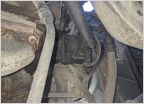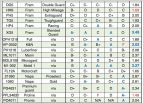-
Welcome to Tundras.com!
You are currently viewing as a guest! To get full-access, you need to register for a FREE account.
As a registered member, you’ll be able to:- Participate in all Tundra discussion topics
- Transfer over your build thread from a different forum to this one
- Communicate privately with other Tundra owners from around the world
- Post your own photos in our Members Gallery
- Access all special features of the site
2004 Tundra 3.4 Engine Manual Transmission (power problem)
Discussion in '1st Gen Tundras (2000-2006)' started by DQuincey, Aug 29, 2024.


 Best replacement headlight assembly 1st gen
Best replacement headlight assembly 1st gen Best place for ordering OEM parts in Canada?
Best place for ordering OEM parts in Canada? What's this #2
What's this #2 Oil filters
Oil filters Convince me NOT to buy Freedom Offroad UCA
Convince me NOT to buy Freedom Offroad UCA Cold blooded Tundra
Cold blooded Tundra














































































